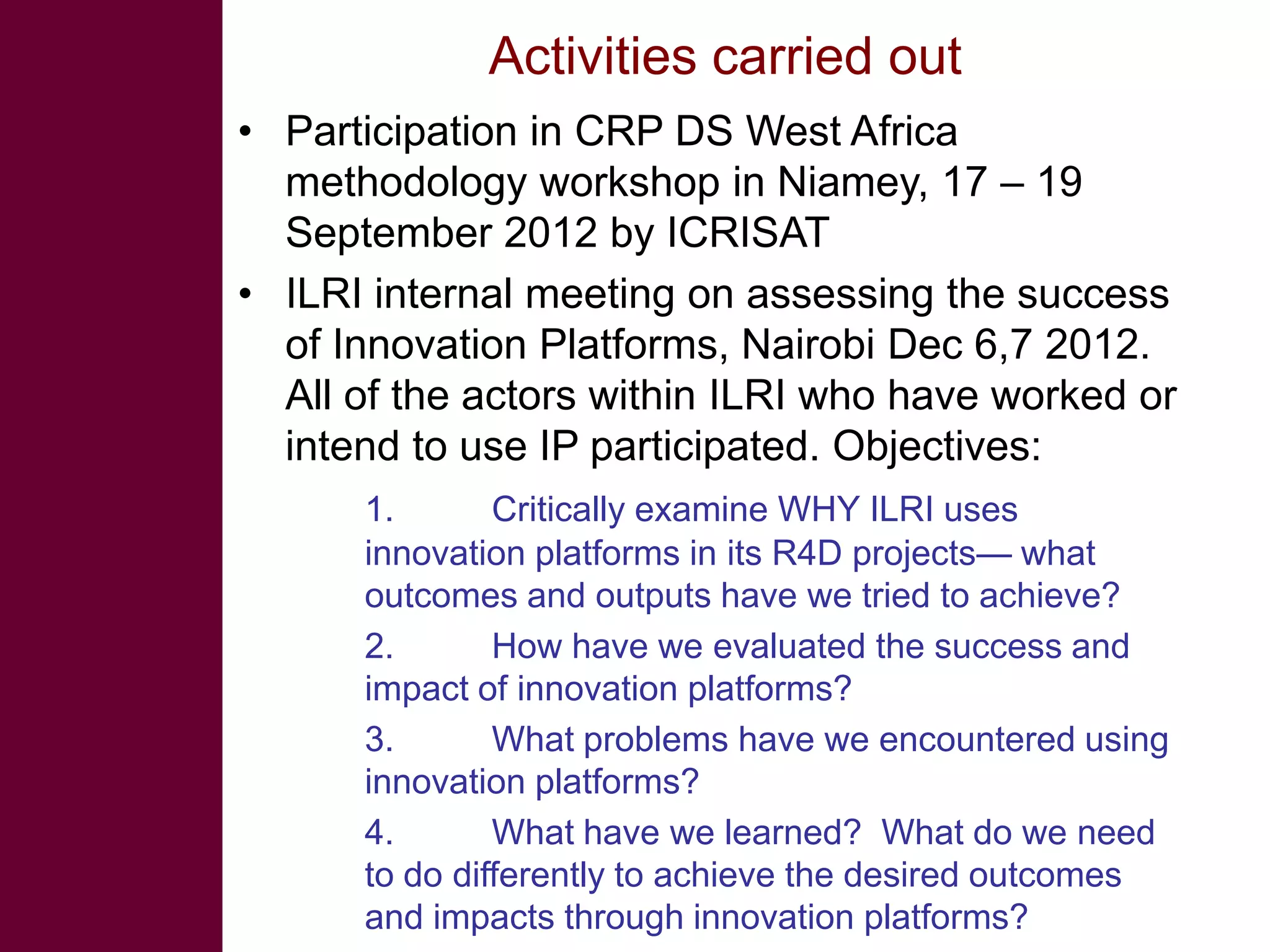The document outlines the activities and planning efforts of the Drylands Systems CRP, including participation in various workshops and stakeholder meetings, contributions to climate risk research, and the ongoing review of historical agricultural research in Fakara, Niger. Key objectives include evaluating the impact of innovation platforms and assessing crop-livestock value chains in West Africa. Planned activities for 2013 also focus on vulnerability assessments and establishing effective linkages among stakeholders.










